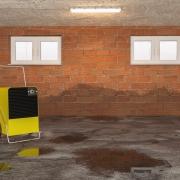The Process of a Flood Remediation Claim
Flooding can cause a variety of costly problems that are covered by flood insurance. In addition to the building structure and personal belongings, flood insurance also covers relocation expenses if necessary.
Before an adjuster visits, you should make a list of everything that was damaged in the flooding. This includes a description of each item, its value, and any receipts or bills you have.
Remediation
Flood remediation is the process of cleaning and sanitizing water-damaged materials. It’s also the first step in overall recovery. It can include everything from removing mud to sanitizing and disinfecting surfaces and materials affected by flooding.
Before work begins, an inspection will determine the level of contamination and the class of water damage. This information will inform the remediation process. For example, class one water is clean but a category three flood might contain sewage and other hazardous substances that require hazmat suits for safety.
A flooded home may need to be treated for mold and mildew. This is because these organisms thrive in damp environments and will eat organic material such as wood used for walls, floors, ceilings and furniture. If left unchecked they can spread quickly and release millions of spores that affect everyone in the home.
To help owners and professionals in their cleanup efforts, EPA has produced a guidance document called Flooded Homes Cleanup Guidance. The document discusses safe and effective methods for restoring flood-damaged homes, including specific approaches for removing standing water, cleaning and drying contaminated structures and materials, and mold testing.
Repairs
Whether your home or business is flooded by hurricanes, a burst pipe or other disasters, it’s crucial to take steps to restore the property as quickly as possible. The longer water sits, the more damage it can cause to building materials and furnishings.
Flood restoration services typically include cleaning up, drying and sanitizing areas and materials that have been impacted by floodwaters. This includes restoring or replacing items damaged beyond repair. Flood remediation services also include making structural repairs to protect the structure from further damage and ensure that it’s safe for occupancy.
One of the first steps in a flood restoration project involves draining the area. This may be accomplished using large tanker trucks or portable sump pumps. If the floodwater is contaminated, a trash pump can be used to remove sand, silt and other debris that might have entered the building.
The type of floodwater also influences the costs of cleanup and restoration work. Clean water is sometimes referred to as “clean” water and typically comes from sources like bathtubs, sinks or washing machines. Gray water is a slightly dirtier form of water that can contain contaminants but usually does not include fecal matter. Black water, on the other hand, can come from sewer line backups and carries a variety of dangerous bacteria and viruses.
Replacements
Before you begin flood remediation work, speak to your agent about what’s covered by your National Flood Insurance Program (NFIP) policy. Ask about any restrictions or limitations, such as how long the property must be occupied for. Also, find out whether you have an NFIP flood damage rider, which costs extra and can be a good investment in some situations.
Water damage remediation involves replacing damaged or destroyed materials and restoring the structure of the building to its normal condition. This includes disinfecting, cleaning and sanitizing the affected area to reduce the risk of bacterial and viral contamination. It is important that all contaminants are removed to prevent the growth of mold which can create health problems.
During the flood cleanup process, it is necessary to remove standing water as quickly as possible. This is especially important because contaminated waters can carry bacteria, viruses and other microorganisms that pose serious health risks to residents. This is particularly true when contaminated water seeps behind walls and in wall cavities.
Flood water often contains sewage, animal waste and garbage which can cause a variety of illnesses. It is essential to throw away any food that has come into contact with contaminated water and to disinfect foods that have been refrigerated. It is also recommended that you discard all insulation materials, such as fiberglass, cellulose and sponge rubber, that have been wetted by black or sewage water.
Final Inspection
During the final inspection, the inspector will check everything that was completed to make sure it meets local building codes. This includes checking the electrical wiring, plumbing, and ensuring that all work has been done correctly. If there are any problems, the inspector will note them on the report and make sure that they are addressed before the home is turned over to the new owners.
While the best way to prevent flood damage is by having a homeowner’s insurance policy that includes loss of use coverage, many cases of water damage can’t be prevented. If your home has been damaged by a flood, it is important to contact your insurance provider as soon as possible to begin the claim process. It is also important to take photos and video of the damage before any cleanup begins, so you can show these to the claims adjuster.
After reporting your flood damage, an insurance adjuster will inspect your property and write a proof of loss statement listing everything that was destroyed or damaged by the floodwaters. If you have a National Flood Insurance Program policy, it is important to ask about getting an advance payment to help cover immediate costs. These payments will be deducted from your final flood insurance claim settlement. It is also a good idea to review your flood insurance policy and the Claims Handbook, so you can better understand what is covered by your policy and how the process works.






